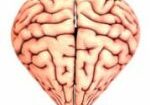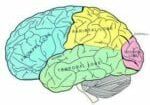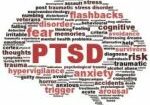
Many of the people who seek treatment with me have a history of trauma. For some, it’s what we in the therapy biz call “big T” traumas, such as physical, sexual, or emotional abuse in childhood or recent life threatening injury. For others, it’s what we refer to as a “little t” traumas, such as a car accident, being bullied in school, or a divorce. Sometimes the client doesn’t actually think of the experience as traumatic but it affects him or her as a traumatic event. Regardless of the flavor or intensity of the trauma there are frequently similarities in how the individual reacts to the event. People often feel unable to “get over” or move past the experience. They might find themselves having intrusive thoughts about the event, avoiding anything that might remind them of the event, or having emotional reactions to current situations that are out of proportion to the trigger. Many people change their normal routine in order to avoid triggers to these unpleasant thoughts and feelings. Their response to the past event is troubling to them, and interferes with their enjoyment of their lives and relationships.
It’s helpful for people who are experiencing a trauma response to understand what is happening, why the brain reacts the way it does.
Depending on the intensity, length, and number of these difficult responses to the event we may call the combination of these experiences Posttraumatic Stress Disorder (PTSD). This can be an intimidating label. It’s the unfortunate pathologizing of what is really just the brain’s normal reaction to an abnormal or disturbing event. Mental health professionals can be big into diagnosing which can make the client feel labeled and stigmatized. The purpose of the diagnosis is not to label the client. It’s to provide an explanation for what is happening and to give us a common language (yes, I speak Psychobabble) to describe what we see and what the client experiences. Even so, it can feel dehumanizing to come away feeling stamped with a label. No matter what we call it or how we choose to describe it, the experience of PTSD is unpleasant, often to the point of being debilitating. It’s also quite treatable.
It’s helpful for people who are experiencing a trauma response to understand what is happening, why the brain reacts the way it does. I explain it to clients in this way:
Our brains are amazing, efficient machines primarily designed for one thing: survival. Most of our activities, from eating to socializing to sex and everything in between, promote our survival as individuals and as a species. Our brains are designed to react differently when we experience a potentially life-threatening event from our normal life experiences. The part of our brain that scans for and recognizes threat is called the amygdalae (we actually have two, one in each hemisphere). Imagine a guy in a watchtower who is constantly on alert and ready to sound the alarm. That’s the amygdalae. If we have experienced a lot of danger or threat in our lives we likely have enlarged amygdalae, which have a hard time knowing the difference between friend or foe and sound the alarm on a regular basis, regardless of the circumstances.
Once the alarm is sounded the amygdalae sends two messages, one to our “primitive brain” (also called the reptilian brain because we have it in common with reptiles and other less evolved species) and one to our frontal cortex, the executive manager of our brain. The message to our primitive brain arrives much more quickly than the one to our frontal cortex. In fact, if we have had a lot of threat in our lives or we are under the age of two the message may never actually arrive at the frontal cortex. This is important because it is the frontal cortex that examines the situation more closely and decides if the amygdalae were right or not about the presence of a threat (remember, there are two, so my grammar is correct here grammar police!) .
When the alarm goes off the primitive brain immediately goes into action and the fight or flight system kicks in. Our sympathetic nervous system takes over and adrenaline and other chemicals in our body are released, our attention becomes much more narrow, and blood pumps to our extremities preparing us to either fight or flee. We may suddenly feel the urge to use the bathroom as our nervous system focuses all of our resources on the job at hand (hence the term “it scared the s*%^ out of me,” although in my house we say “scared the tuna salad out of me” because we like the book Leonardo the Terrible Monster, but I digress). The part of our brain that helps us track the timing of events, our hippocampus, shuts down temporarily, as does part of our frontal cortex. This allows the fight or flight system to do it’s job without distraction. The shutting down of the hippocampus is why people with PTSD feel as if the event is still happening today, as opposed to months or years ago. All of this occurs in order to help us survive the event and is sometimes called “the threat response cycle.”
If our brains didn’t react in this way our frontal cortex would stay engaged and be completely unable to deal with the emergency situation. Our frontal lobe moves slowly and deliberately. It’s also easily distracted. It’s good for many things like math, science, making plans, and picking which peanut butter to purchase, but emergencies? Not so much. Imagine that you are stepping off the curb in front of a bus that is about to squash you. If your frontal cortex is in charge you may be distracted by the cute puppy across the street and not react to the bus, or you may start trying to figure out which is moving faster, you or the bus, in order to determine whether or not you should get back on the curb. In either case, you’re likely to become part of the front of the bus unless the bus driver’s primitive brain kicks in or you a have a friend standing next to you who isn’t distracted by the cute puppy or trying to do an algebraic equation involving bus speed. Thank goodness for the primitive brain. What a life saver, literally!
Usually when we learn a new task such as how to tie our shoes or play the piano we have to practice the task repeatedly in order for it to move from explicit memory to procedural memory. In explicit memory we make a conscious effort to remember how to do something, for example, “the squirrel runs around the tree and jumps in the hole” when learning to tie shoes. When something has moved into procedural memory we can do it without thinking, on auto-pilot. How many times do you have to think about squirrels and trees when tying your shoes as an adult? Hopefully not often. If so, that’s a whole other blog post.
The crazy feeling you may have if you have PTSD isn’t crazy, it’s just poorly processed trauma.
For survival purposes information from life threatening situations moves much more rapidly into our procedural memory. We only need one encounter with a bear in the woods to learn that meeting a bear in the woods is a risky proposition. This is important, and in order to really ensure our safety our brain generalizes the information. It’s not just that bear in that woods that is dangerous. Our brain may decide that any woods are dangerous, that any big hairy animal is dangerous, that things that poop in the woods are dangerous, that being outside when it’s cloudy is dangerous, or that going hiking with friends who attract bears is dangerous (this is actually probably true). I could go on for days, but you get the picture. This generalization makes sense for the most part and happens because the experience is stored in our procedural memory as a chunk so that anything that reminds us of one part of the situation (bears, cloudy days, woods, pooping in the woods, hiking, friends who attract bears, etc.) may bring up the the whole memory chunk. When this starts happening frequently, or at inopportune times, or we begin to move into fight or flight when there is no actual danger we call this PTSD.
So, with apologies to all of my friends who are neuropsychologists, this is my layperson’s explanation of trauma and the brain. The crazy feeling you may have if you have PTSD isn’t crazy, it’s just poorly processed trauma. The good news is that we can fix that. Really, we can, and I know how.





















